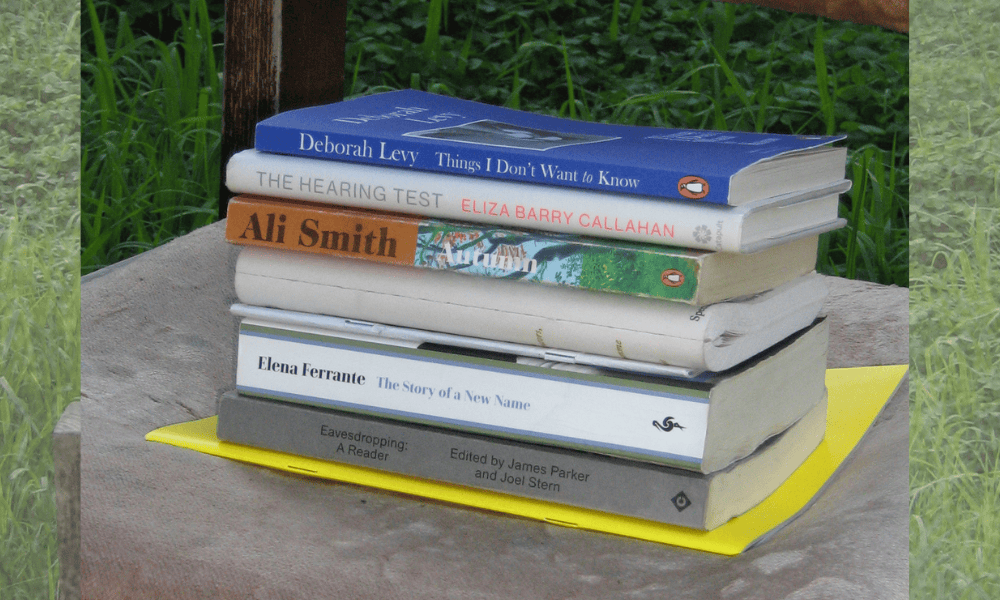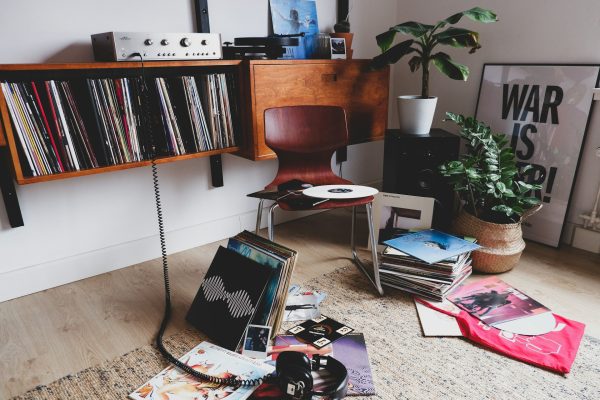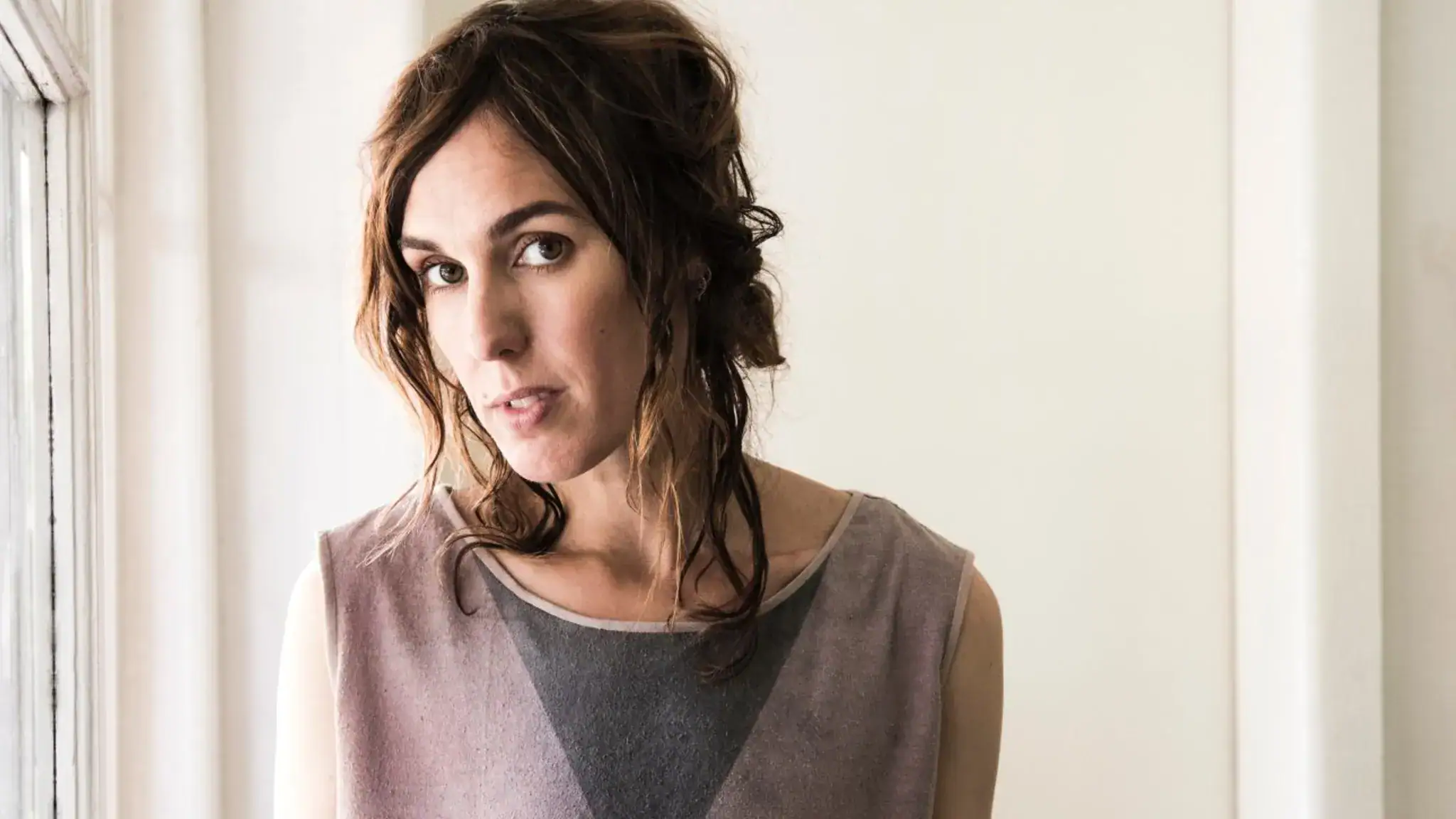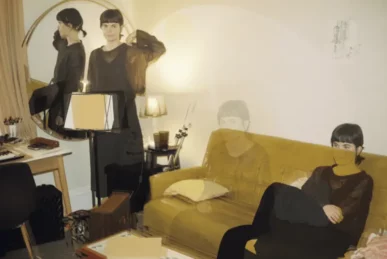Written by Thea Martin
SONG 1: SELF-NOISE
READING: Muted Chorus by Samson Young from Eavesdropping: A Reader
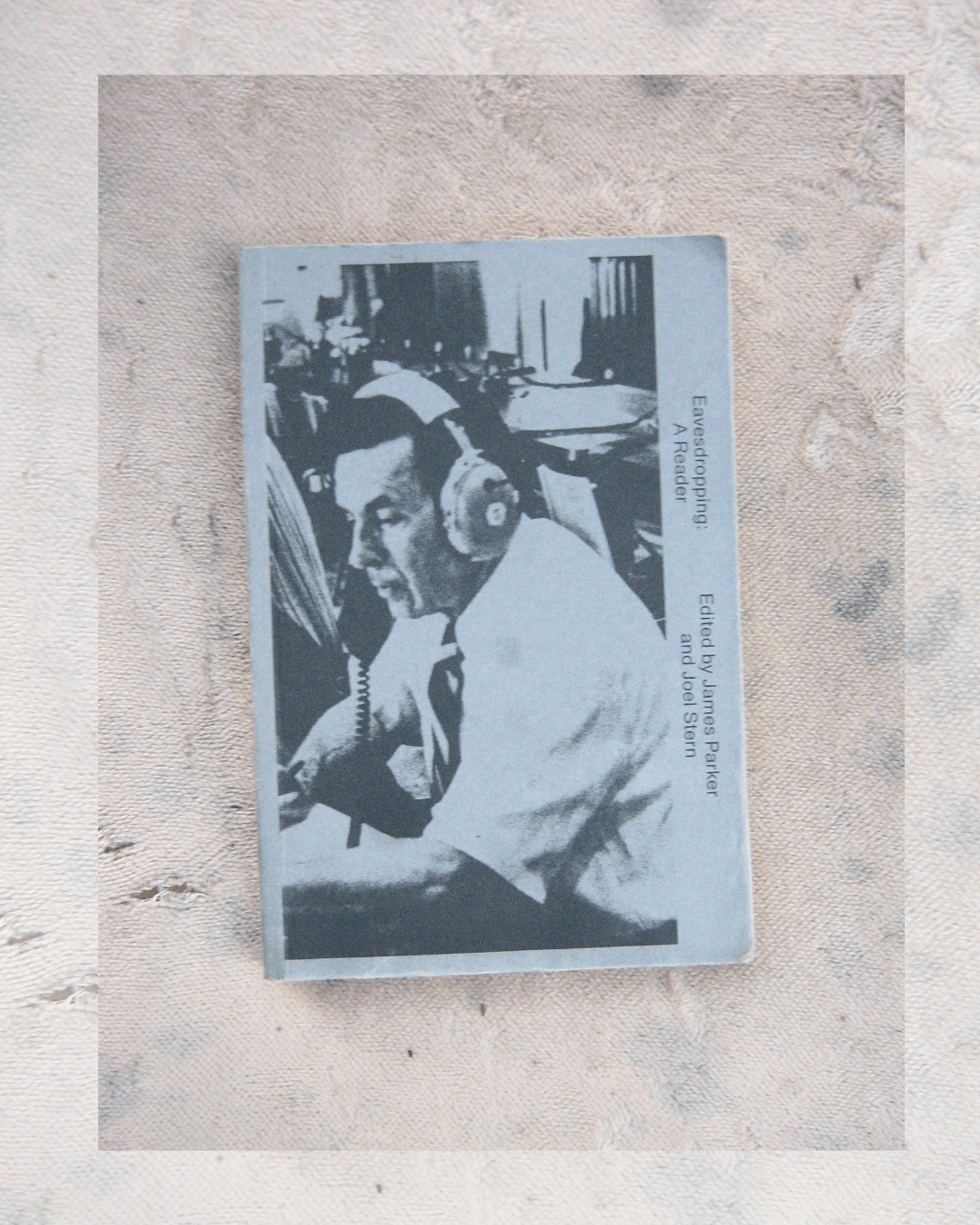
The exact article that I remember the words ‘defamiliarise’ and ‘make strange’ stemming from is now lost to me. The exact article that I remember the words ‘defamiliarise’ and ‘make strange’ stemming from is now lost to me. This is often the case with my ‘research’ experience – typing a phrase into a search engine, opening 5 articles in new tabs, a new thought forming from what I’m seeing or what’s missing, another 5 new tabs, a third of those get read, the names rarely noted down, quotes misplaced, frustration followed by excitement, frustration again, a burst of energy, a new thought trail to follow, many more lost. Luckily, I do have 2 other certain anchor points for the conception of this song; Tristan Louth Robins’ sound installation from the 2024 Neoterica exhibition at the Adelaide Railway Station, and an article from Eavesdropping: A Reader, lent to me by a friend a few years ago that I’ve forgotten to return.
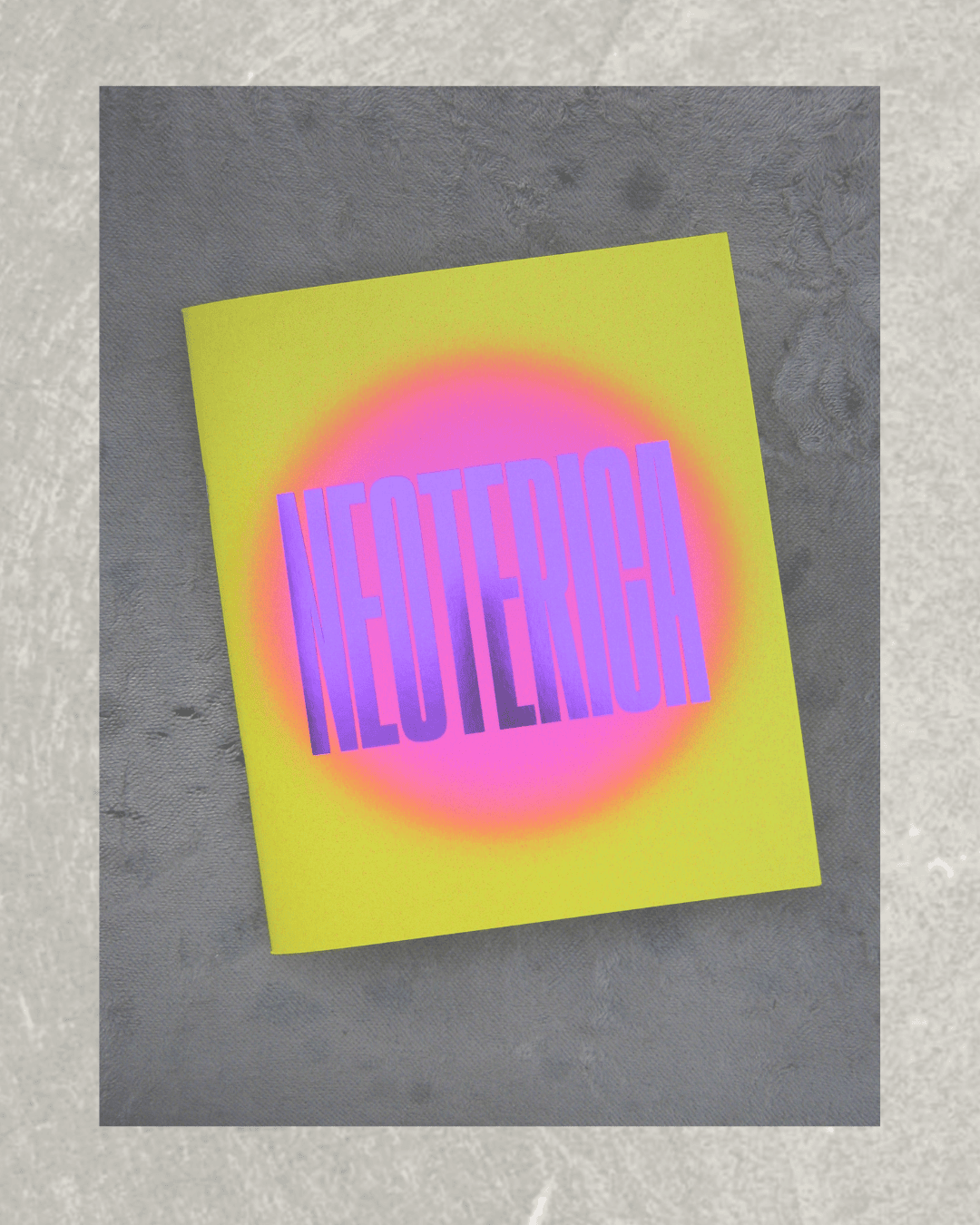
Tristan’s artwork is the namesake for this EP – his installation Self Noise displaces field recordings from their environments, creating new soundscapes full of ambiguity. I’d never heard the phrase self noise before coming upon this exhibition and I was instantly drawn to the term. One definition for self noise is the signal a microphone produces of itself, even when no sound source is present. How the apparatus (microphone) interacts with the world is of great interest to me, having produced my previous EP at home, these in-between sounds are familiar and comfortable – the points where sound leaves debris and decay in its wake. I have also repurposed the term to describe how I feel about songwriting, finding ways to express the noise of my own self. Self-Noise the song sits in two pieces in my mind, the first as a set of instructions to myself on how to discover ‘self noise’, the latter as an observation of how I go about creating it.
Muted Situation 5: Muted Chorus by Samson Young from the aforementioned Eavesdropping: A Reader was at the front of my mind in making this song, from lyric writing through to recording. The article describes a work by Hong Kong artist Samson Young in which a chamber choir performs Baroque pieces ‘without projecting the musical notes’. What is heard with the pitches absent is the shapes of sounds, the whispers, the intakes of breath, the turns of page. When the dominant sound is suppressed, something new is amplified. Or is it new? Was it always there? Disrupting the canon is of significant interest to me, both as a musician raised by the institutional ecologies of Western classical music, and also as a musician of my gender identity. What do we discover through muting? Ourselves? Others? Perhaps something new, perhaps something that was there all along.
This article continues to challenge me and I return to it frequently. I seek to ‘mess with’ the canon, but Samson Young is not satisfied with that as an end point, asking, what happens beyond? After awareness, where do we go next? He doesn’t give an answer, but he does give a story of ‘appropriation and misappropriation’, of Togaku, a Japanese court music imported from the Chinese Tang Dynasty. It’s a complex story of missing sources, mishearing, struggles over ‘primitivism’ and ‘civilisation’ and the role of musical traditions in building images of national identity. Young reflects, “you end up playing into the frames that you’d been subjected to in the first place”.
The best I have to offer alongside this story (for now) is an ask to myself, to defamiliarise, to make strange. Reframed, the familiar can become something else. Strange asks us to listen differently, to listen again. What do we hear now?
SONG 2: THE RED OF FOREARM DOWNS
READING: The Story of A New Name by Elena Ferrante
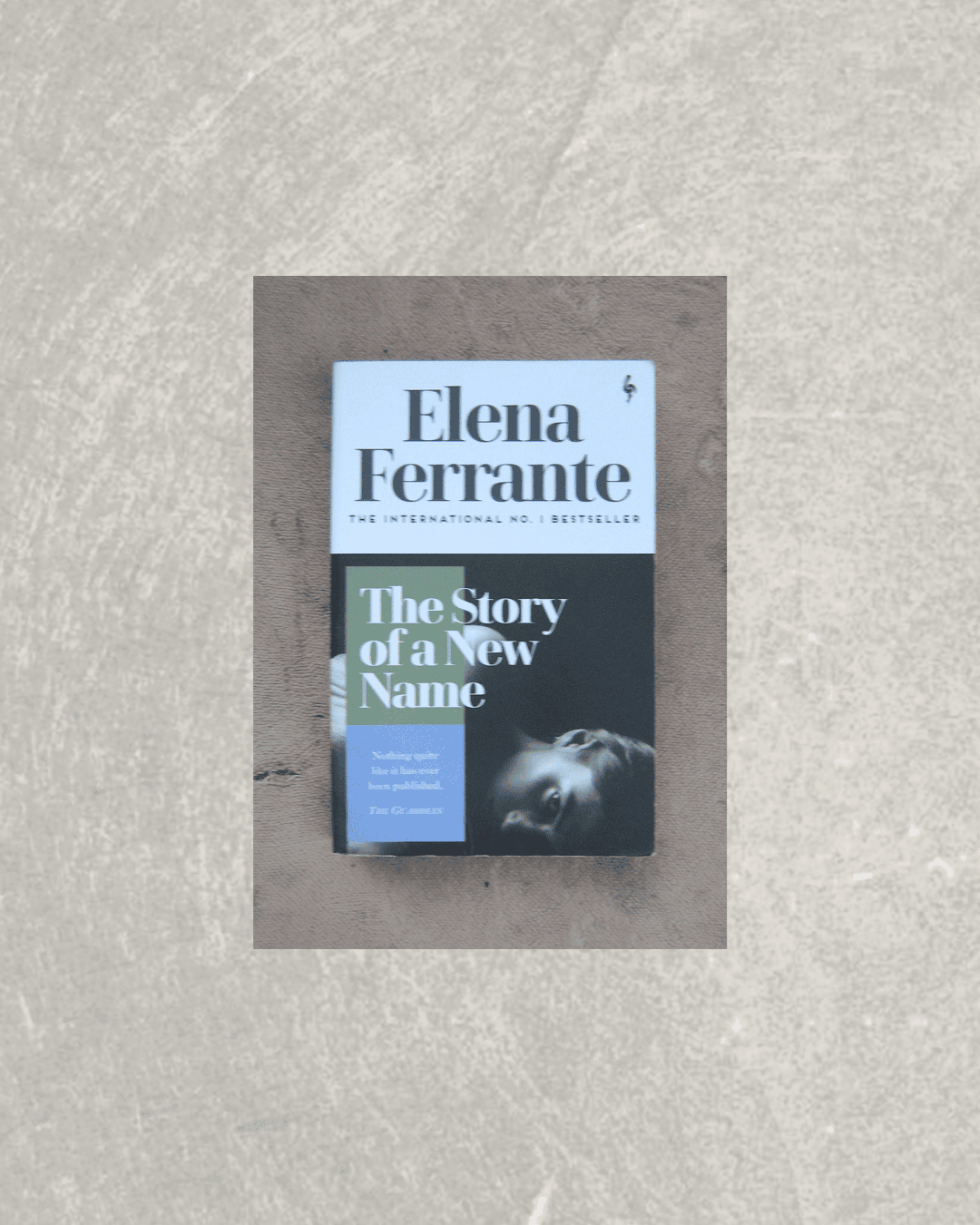
My band Twine spent 10 incredible days in Aotearoa at the beginning of 2024 at Camp Wainui for the music festival Camp A Low Hum. Never before have I been in such a beautiful, artist-driven festival community. We stayed on site for the two weekends of the festival as well as the days in between, which became a kind of mini festival for the artists and bands to hang out, write, record and workshop together. I played 13 sets across the course of the trip, jumping on to improvise some violin parts for anyone who would let me as well as to play with my darling Twine family.
Books are an essential tour companion for me, they’re somewhere to be where I can still be around people I care for, but can rest from socialising, and with no phone reception at the festival, it gave me plenty of time to pour over the second novel of Elena Ferrante’s Neapolitan Quartet, The Story Of A New Name.
Curled on the couch, outside on the cabin deck, high up in the forest at the Journey Stage or in my bunk bed, I consumed this novel and let it consume me. I love the way Ferrante describes the pain and complexities of a lifelong relationship and the ways in which place, power and gender define and impress upon it. As I was healing from my first big breakup at the time, reading this story felt like a how-to guide on processing a relationship where memory had become blurred or absent from all the ‘ow’ of the present. Reading Ferrante always makes me feel rage and quiet together.
Somehow among all of the musicians staying in our cabin, not one person had brought an acoustic guitar, so for the first time I attempted writing a song on my violin, with the thought that I’d transition it over to guitar eventually, but I never did. That song became The Red of Forearm Downs, defined by Aotearoa and by the places I made up to counter my heartbreak. I left pieces of myself in this book, in this song and at that festival, and I am glad.
SONG 3: YEAR END POEM
READINGS: Things I Don’t Want to Know by Deborah Levy and Walking between the disciplinary and the tactical – An Embodied view of Certeau’s everyday practices – Maria Persu
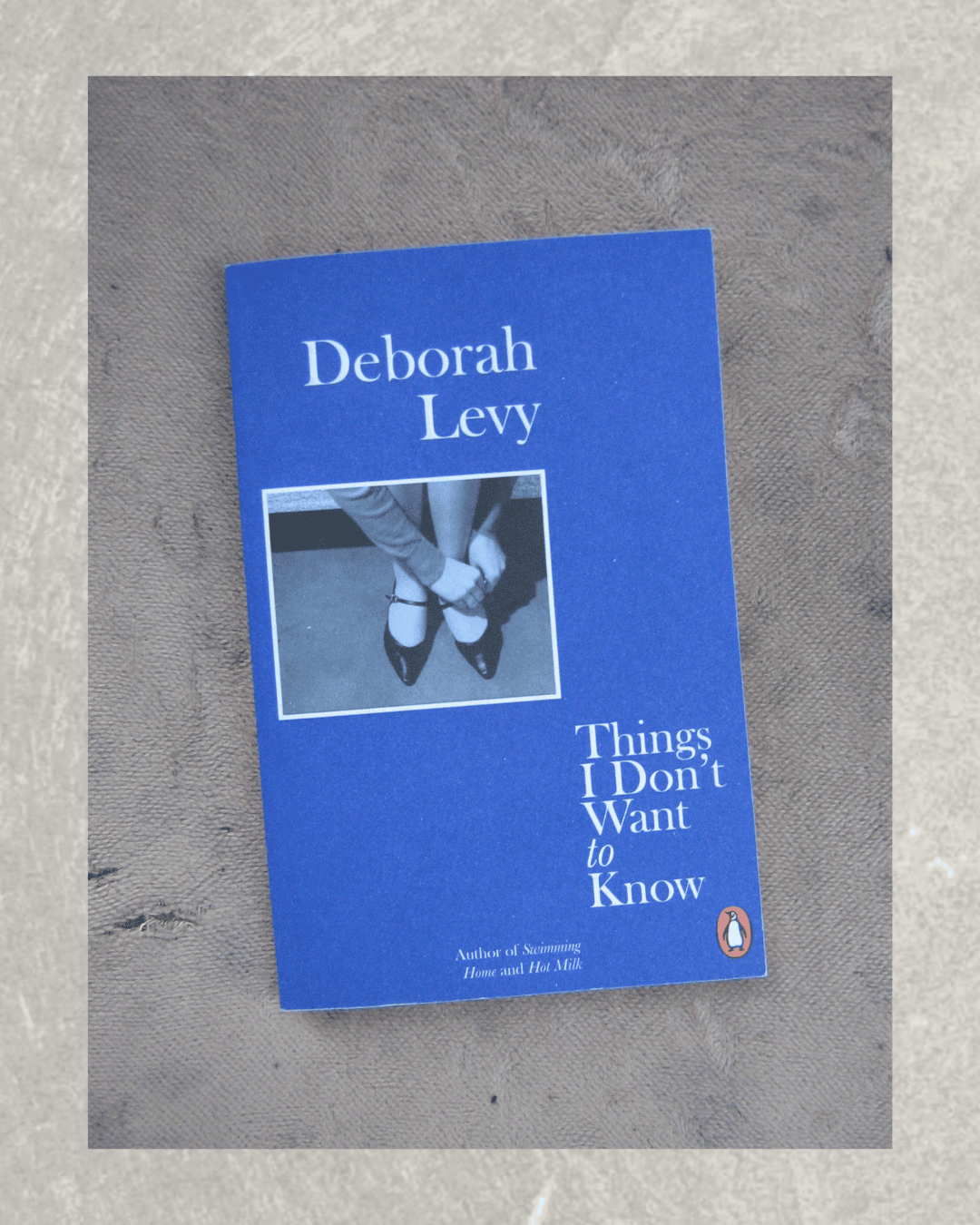
Ah suburbia. A terrifying place! And the only place I’ve ever lived. 2 houses, 10 minutes drive apart, 40 minutes bus apart, 40 minutes walk apart. I’ve lived the last almost 4 years in an old red-brick sharehouse – I’ve spent the last 3 summers couched in scalding concrete. Year End Poem is mostly an ode to this house that I’ve grown to really deeply love. I was reading Deborah Levy’s Things I Don’t Want to Know: On Writing at the end of 2024, mostly outside, squinting, with the pavement reflecting harsh heat back up into my face. Structured as a 4-part response to George Orwell’s essay Why I Write, this book tugged at me in all the ways I want. How do we write? When do we write? Why do we write? And most importantly, how on earth do we find the courage to keep writing? Quite often when I read I keep my notes app open and jot down little thoughts and quotes that stick with me. Then I tidy them up into some kind of prose or email to someone or some kind of coherent stanza. The lyrics to Year End Poem were basically constructed by refusing to tidy, for it was too hot for such a thing. And so, a scrappy poem for the end of the year.
Some gems from this book:
“Even the most arrogant female writer has to work overtime to build an ego that is robust enough to get her through January, never mind all the way to December.”
“To become a WRITER I had to learn to INTERRUPT, to speak up, to speak a little louder, and then LOUDER, and then to just speak in my own voice which is NOT LOUD AT ALL.”
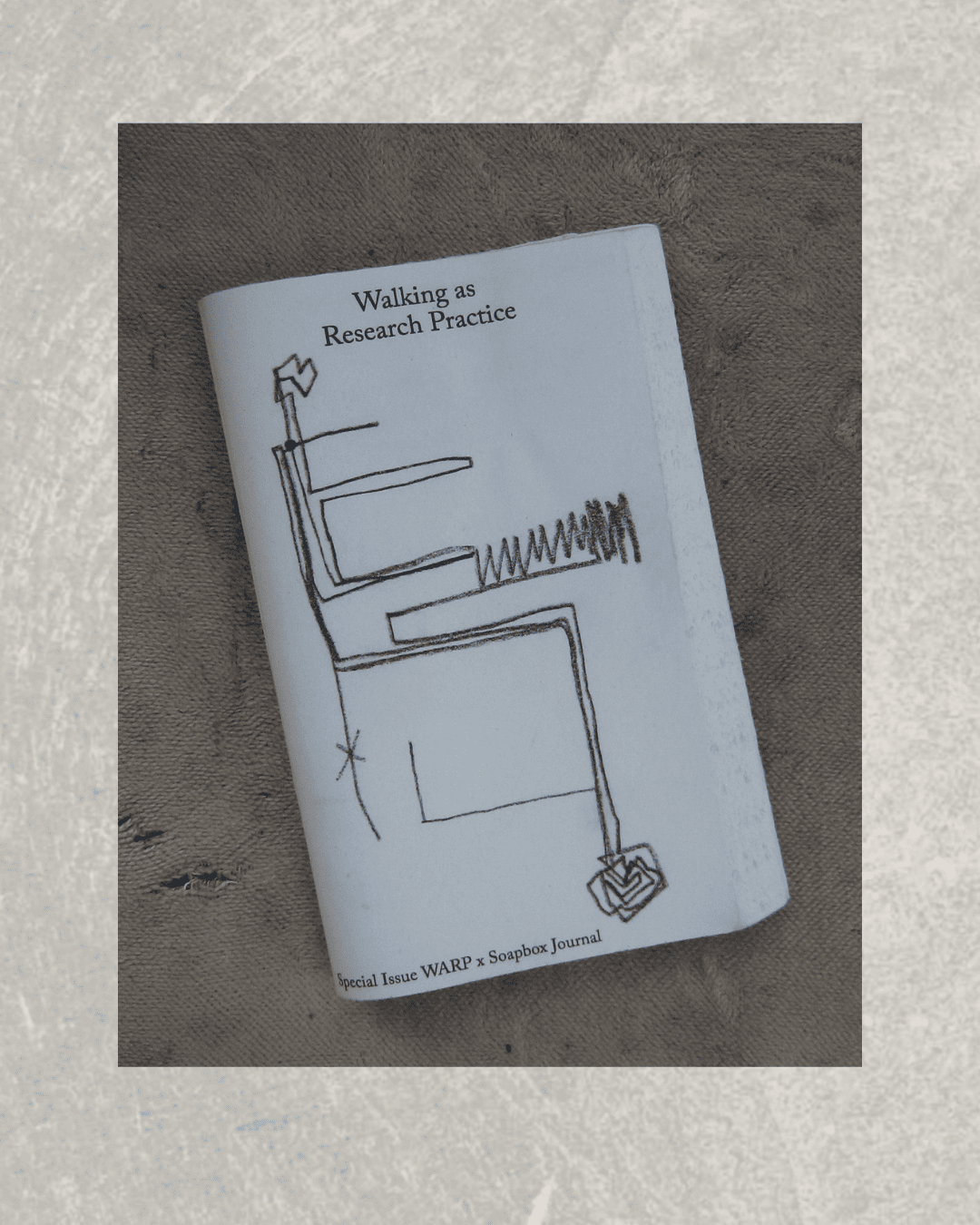
This essay by Maria Persu is a bonus inclusion, read long after the song was written. It comes from a journal Sam picked up for me from Perimeter Books in Naarm/Melbourne, called Walking As Research Practice. It’s a wonderful book to hold, designed specifically for walking while reading, featuring large text, text displayed only on the right hand pages for ease of holding, a spine that bends all the way around and thick, hand-cut pages. This essay allowed me to look back at what I had said in Year End Poem with more clarity – how we practice the everyday, how we write onto space with the paths we walk and how to FIGHT BACK IN THE BATTLE OF/WITH SUBURBIA.
“Pedestrian acts of daily creative resistance can represent ways of contesting urban hierarchical constructions, as certain sociomaterial realities of the city invite the ordinary individual to respond.”
SONG 4: THIS UNDERLINER
READING: Collapse MUD Zine by Constatine Stefanou
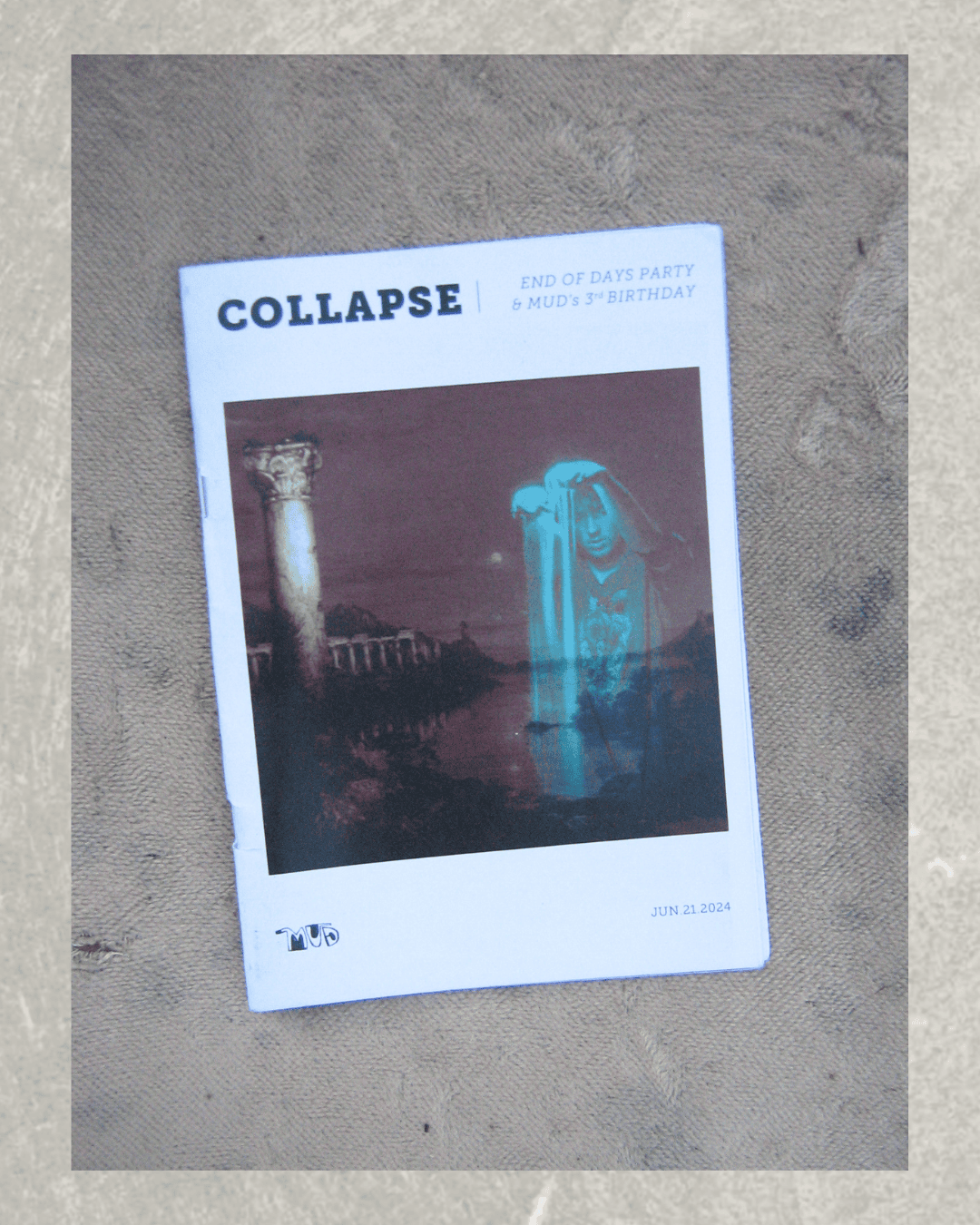
In June of 2024, the word ‘collapse’ was in my head a lot. It was a theme of a birthday party, a medical emergency, a reluctant turn to a diagnosis, a painful end to a friendship and all the while, as I kept at the tasks of learning and thinking and being, I saw over and over the systems of governments, nations, militaries and institutions continue to crumble as I encountered them distraught, anew, as the disillusions and lies that they are.
“𝘛𝘩𝘦𝘳𝘦 𝘪𝘴 𝘵𝘰𝘰 𝘮𝘶𝘤𝘩 𝘩𝘪𝘴𝘵𝘰𝘳𝘺 𝘣𝘦𝘪𝘯𝘨 𝘮𝘢𝘥𝘦 𝘵𝘰 𝘣𝘦 𝘱𝘶𝘵 𝘪𝘯𝘵𝘰 𝘣𝘰𝘰𝘬𝘴. 𝘈𝘯𝘥 𝘴𝘰𝘮𝘦𝘩𝘰𝘸, 𝘵𝘩𝘪𝘴 𝘪𝘴 𝘢𝘭𝘭 𝘵𝘰𝘰 𝘰𝘳𝘥𝘪𝘯𝘢r𝘺. 𝘊𝘰𝘭𝘭𝘢𝘱𝘴𝘦 𝘪𝘴 𝘵𝘩𝘦 𝘯𝘦𝘷𝘦𝘳 𝘦𝘯𝘥𝘪𝘯𝘨, 𝘵𝘩𝘦 𝘮𝘶𝘯𝘥𝘢𝘯𝘦 𝘢𝘯𝘥 𝘵𝘩𝘦 𝘥𝘦𝘤𝘭𝘢𝘳𝘢𝘵𝘪𝘷𝘦. 𝘛𝘩𝘦 𝘮𝘦𝘥𝘪𝘵𝘢𝘵𝘪𝘰𝘯 𝘰𝘧 𝘯𝘶𝘤𝘭𝘦𝘢𝘳 𝘸𝘢𝘳𝘩𝘦𝘢𝘥𝘴 𝘴𝘵𝘰𝘳𝘦𝘥. 𝘈 𝘤𝘰𝘭𝘭𝘢𝘱𝘴𝘦 𝘪𝘴 𝘵𝘩𝘦 𝘮𝘪𝘴-𝘶𝘴𝘦𝘥, 𝘵𝘩𝘦 𝘴𝘦𝘭𝘧-𝘤𝘢𝘳𝘦𝘥, 𝘵𝘩𝘦 𝘴𝘭𝘰𝘸𝘭𝘺… 𝘢𝘱𝘱𝘳𝘰𝘢𝘤𝘩𝘪𝘯𝘨… 𝘳𝘢𝘨𝘦.” – Constantine Stefanou
My friend Kosta Stefanou runs an organisation called MUD, and he was throwing a collapse-themed birthday party for the organisation with the byline ‘improvising utopia’, a party for the end of days. I was running a little booth at the event called Post-Scores for Doing Utopia, which invited people to score (through writing, drawing and mark-making), the sounds imagined and remembered around their ideas of utopia as a verb, as a way of desiring other presents and futures.
Along with the party, Kosta published a zine – my favourite kind of party – one with accompanying reading material. Local artists across mediums of poetry, prose, sound, movement and performance action responded to the theme of Collapse tangentially or directly. The breadth of content contained in this text has really stuck with me, how the word ‘collapse’ can describe experiences reaching far across the emotional spectrum, from being a description of comfort, intimacy and emergence to one of dissolution, loss and destruction.
This Underliner unpacks my thoughts around the struggles of attempting to self-educate, to unlearn and to develop critical consciousness and media literacy, and the ways in which the emotional residue of such attempts show up painfully in our forever collapsing public and private spheres, where we are increasingly being surveyed and participate in the surveillance ourselves. Some big E major chords felt like the perfect place to spill myself all over into.
SONG 5: BOTY
READINGS: Autumn by Ali Smith and The Hearing Test by Eliza Barry Callahan
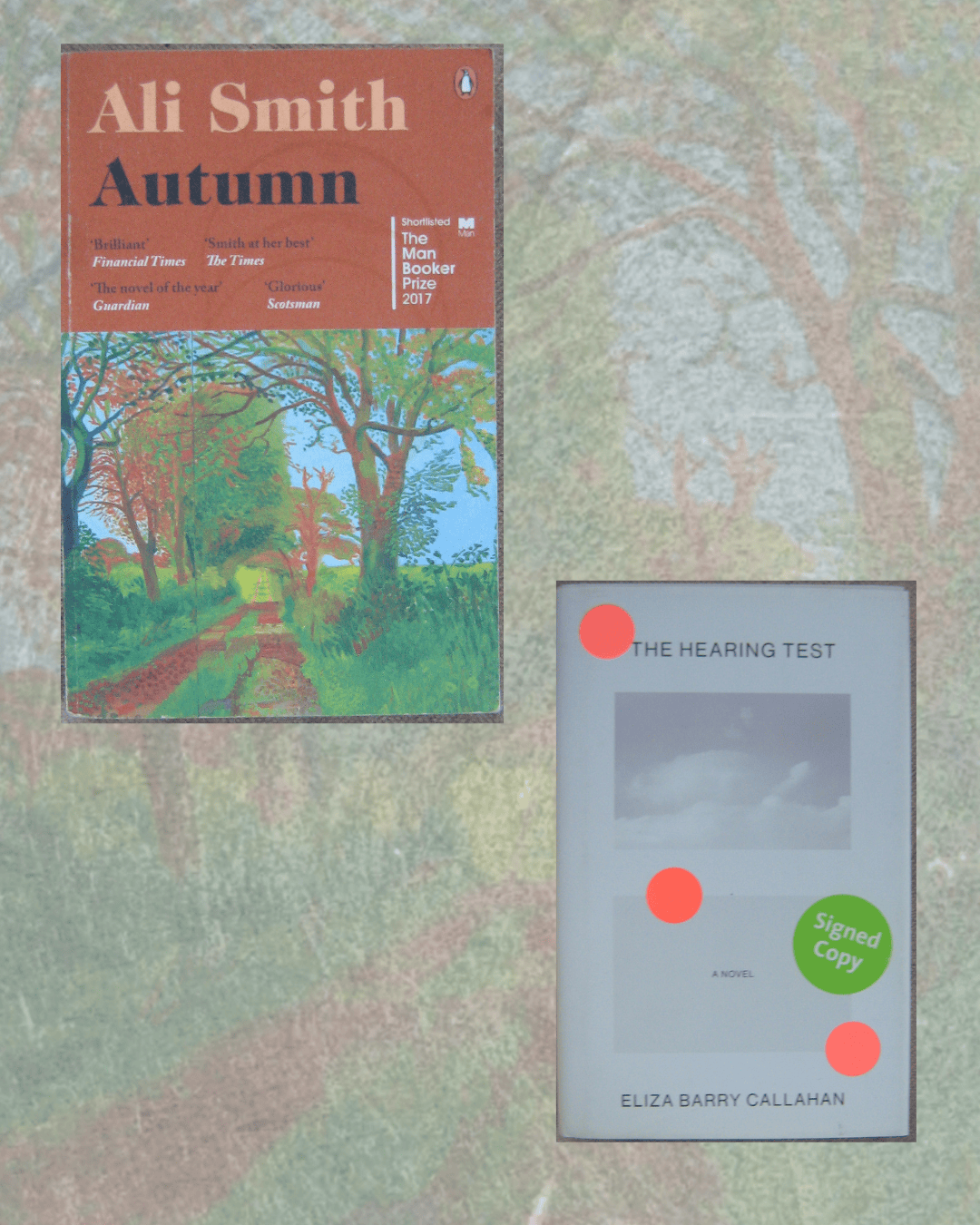
I first read Scottish author Ali Smith’s beautifully titled novel How To Be Both in 2023, lent to me by my soon-to-be short snarl bandmate Sam. How To Be Both is an experiment in duration, told in 2 stories. Two versions of the novel were published, with the two stories in alternating order, meaning they could be encountered differently to another reader, each story overlapping and melding with the other in fascinating and subtle ways. I fell in love in particular with how Ali Smith brings the stories of artists real and imagined organically and intricately into the lives of the characters she creates. Autumn is no exception in this regard, weaving the world of forgotten and recently rediscovered/appreciated (largely due to the work of feminist art critic Sue Tate) pop artist Pauline Boty, into the lives of neighbours Elisabeth and Daniel. Autumn is also the first of her seasonal quartet novels, written in close succession and released within the time period of the novels’ storylines, making them both thematically and structurally, some of the first Post-Brexit books. The whole quartet is an incredible body of work, a real ‘state of the nation’ text. I believe they will become classics and I look forward to reading them again and again as I age.
I read the entirety of Autumn on a weekend drive to and from Naarm/Melbourne with my band War Room. How time passes, how we feel it and what we make of it seems to me to be a central tenet of Smith’s writing. Long car drives bend my own perception of time, I can read an entire novel with ease, drift my gaze sporadically to the window, shift my hearing intermittently toward the conversation of my friends and then return back into the book. I can sometimes even experience all 3 simultaneously. I wrote the majority of the lyrics for this song as a way to document this strange and beautiful experience of drifting that has become such a big part of my life as a touring musician, centred around the image of Pauline Boty’s 1963 painting The Only Blonde In The World which is also featured inside the back cover of my copy of Autumn.
To read more of Ali Smith talking about Pauline Boty’s artwork I highly recommend an article she wrote for The Guardian: Ali Smith on the prime of pop artist Pauline Boty. https://www.theguardian.com/books/2016/oct/22/ali-smith-the-prime-of-pauline-boty
The Hearing Test by Eliza Barry Callahan I picked up blind in New York in early 2024 from a bookstore in the Chelsea Market. The title, its newness, the fact that it was a signed copy and a debut novel, that the author was from New York, that she seemed to also be a young musician and a filmmaker, and of course, the premise, intrigued me;
“An artist suffering from sudden hearing loss finds herself even more sensitive to the lives of others, observing neighbours and the absurdities of the city, always punctuated by art and literary gossip.”
It feels so good to pick something up that you’ve never heard of, to trust the gut instinct that maybe it’s special and about to change you, and then to be right! This has become one of my most favourite books, I even enthusiastically inflicted it upon the reading group I facilitate called On Listening, where, as you may have guessed, we read texts of all kinds relating in some way to what it means to listen. Though I don’t reference this book specifically in the song Boty, and read it much earlier than the song was conceived, I include it here as a recommendation as it explores so much of what I attempt to contain in Self Noise as a project, an exploration of sonic memory and imagination, the sound of language and language of sound, the blurring of sensorial experience and of course, what it means to be someone who makes things.
It seems that in the time since the book came out, Eliza Barry Callahan has created a short film titled The Non Actor based on her novel, starring Maya Hawke and Victoria Pedretti. I hope that this novel shows up in the world and people’s lives in even more ways. I’m happy to lend my copy to anyone who would like it to show up in theirs. ◾


